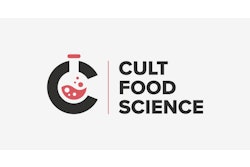
Two companies partnered to bring cell-cultured red snapper fish (Lutjanus campechanus) to the pet food industry. CULT Food Science announced its collaboration with Umami Meats to supply cultivated red snapper for CULT’s pet food brands. CULT plans to use the cell-cultured red snapper meat in its Marina Cat treat line. However, the planned cat treats made with tissue-cultured red snapper have not yet appeared on the market. The development of cell-cultured red snapper could reduce pressure on wild populations of the animal.
The International Union for the Conservation of Nature (IUCN) lists the red snapper as vulnerable to extinction. From 1955 to 2010, the total biomass of red snapper declined by 96% in U.S. waters due to fishing and habitat degradation. The U.S. Gulf of Mexico red snapper fishery is classified as overfished. Although conservationist have implemented harvest management strategies, the population is still in decline. Monterey Bay Aquarium’s Seafood Watch considers red snapper caught in the U.S. Gulf of Mexico with vertical lines is a “good alternative” to more endangered fish. Since adult red snapper live near the rocky bottom of coastal water, long-line fishing prevents damage to the seabed caused by dragnets and similar commercial fishing methods. However, even long-line fishing for red snapper can catch other, more seriously depleted and overfished species.
“We must take steps to preserve ocean food sources and ecosystems for the long term,” said Lejjy Gafour, CEO of CULT in a press release. “Fish is heavily used in pet foods and feeds for both land and aquatic animals alike. Being able to replace ocean harvested fish with cell-based sources is a strong solution to relieving the destructive pressures on our aquatic ecosystem. At the same time, it also will let us provide healthier alternatives for our pets."
Benefits of cell-cultured meat in pet food
Cell-cultured red snapper is made by taking a small sample of the animal’s cells and placing them in a nutrient-rich medium kept under specific temperature conditions. The cells then divide and multiply, forming muscle tissue that can be processed into a novel protein source for pet food.
Supporters believe cell-culture technology will fulfill demand for animal muscle tissue without the need for farms. Growing meat in vitro hypothetically could reduce pollution and habitat loss associated with rearing, slaughtering and transporting livestock. Along with resource use reduction, animal rights advocates hope cell-cultured meat will decrease demand for livestock kept in captivity, along with harvesting of wild animals, including red snapper. Cell-cultured meats also reduce the chance of zoonotic disease spreading from livestock and wild game to people. Nevertheless, production of cell-cultured tissues requires specialized infrastructure, and the lifetime sustainability assessments of the products need to incorporate construction and other start-up costs. Meat from farms and fisheries remains much less expensive than cell-cultured novel pet food proteins.
Cell-based meat’s sustainability complex for pet food
Also, researchers have questioned the environmental sustainability of cellular agriculture, largely because of the amount of energy used to produce meat outside of an animals’ body. Although animal welfare advocates favor laboratories over feedlots, the wider effects of cell-based meat could have negative effects on wildlife and interconnected ecosystems of the planet. Considering the importance of the environment to many pet owners, cellular agriculture may need to reduce its carbon footprint before pet food buyers accept the products, even as costs drop from the third of a million dollars that the first cell-cultured burger cost in 2013.
The October 2023 issue of the journal Nature Food focused on cellular agriculture. In one of the articles, a researcher at the University of Helsinki, Finland detailed challenges to assessing the ecological effects of the technology. With cellular agriculture in its infancy, assessing the environmental impact of a full-grown industry remains difficult.
In an earlier study, scientists at the University of Oxford assessed the effects of cellular agriculture on climate change. Their findings suggested that, over the long term, cultured meat production methods may require large enough energy inputs that the technology could increase global warming more than some types of cattle farming. Their analysis assumed that energy production remained dependent on fossil fuels. If people transition to renewable resources, the energy demands of cellular agriculture become less of a problem. The Oxford scientists simulated carbon dioxide (CO2), methane (CH4), and nitrous oxide (N2O) produced as a result of beef from cattle versus cell-cultured meat, and compared how global temperatures would rise.
“Cattle systems are associated with the production of all three greenhouse gases above, including significant emissions of CH4, while cultured meat emissions are almost entirely CO2 from energy generation,” the scientists wrote in a 2019 paper published in Frontiers in Sustainable Food Systems. “Under continuous high global consumption, cultured meat results in less warming than cattle initially, but this gap narrows in the long term and in some cases cattle production causes far less warming, as CH4 emissions do not accumulate, unlike CO2.”
While future developments in cellular agriculture may be able to beat conventional livestock at resource conservation and reducing greenhouse gas emissions, current technologies have limited environmental sustainability credibility. However, when cell-cultured meat replaces wild-caught fish from vulnerable species, the technology gains a conservation edge.
















